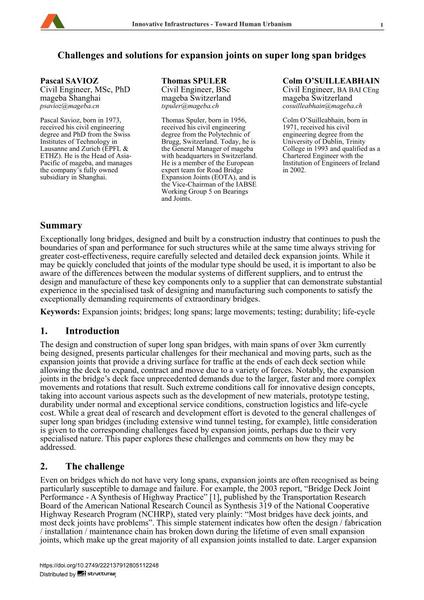Challenges and solutions for expansion joints on super long span bridges

|
|
|||||||||||
Bibliographic Details
| Author(s): |
Pascal Savioz
Thomas Spuler Colm O'Suilleabhain |
||||
|---|---|---|---|---|---|
| Medium: | conference paper | ||||
| Language(s): | English | ||||
| Conference: | 18th IABSE Congress: Innovative Infrastructures – Towards Human Urbanism, Seoul, Korea, 19-21 September 2012 | ||||
| Published in: | IABSE Congress Seoul 2012 | ||||
|
|||||
| Page(s): | 1643-1650 | ||||
| Total no. of pages: | 8 | ||||
| DOI: | 10.2749/222137912805112248 | ||||
| Abstract: |
Exceptionally long bridges, designed and built by a construction industry that continues to push the boundaries of span and performance for such structures while at the same time always striving for greater cost-effectiveness, require carefully selected and detailed deck expansion joints. While it may be quickly concluded that joints of the modular type should be used, it is important to also be aware of the differences between the modular systems of different suppliers, and to entrust the design and manufacture of these key components only to a supplier that can demonstrate substantial experience in the specialised task of designing and manufacturing such components to satisfy the exceptionally demanding requirements of extraordinary bridges. |
||||
| Keywords: |
bridges testing durability life-cycle expansion joints large movements long spans
|
||||
